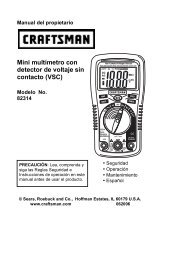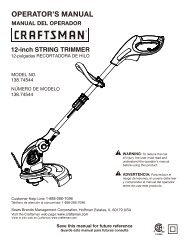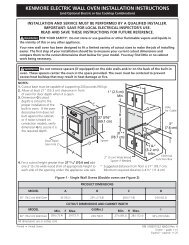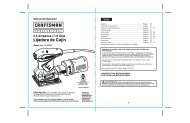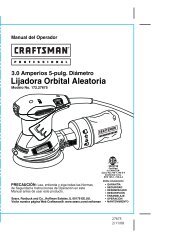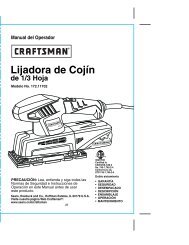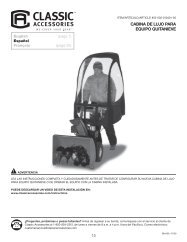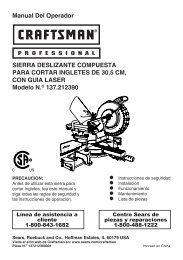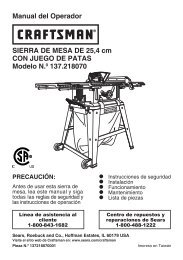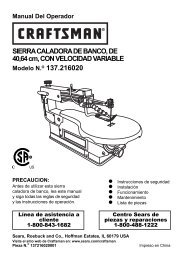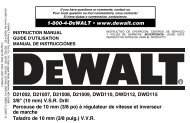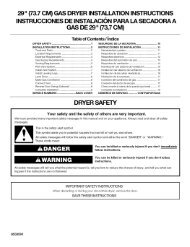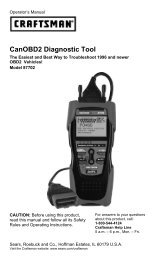You also want an ePaper? Increase the reach of your titles
YUMPU automatically turns print PDFs into web optimized ePapers that Google loves.
Ford OBD1 Systems<br />
CODE RETRIEVAL PROCEDURES - OVERVIEW - KOEO TEST<br />
� Intermittent/History DTCs<br />
Intermittent/History DTCs are stored in the computer's memory for<br />
problems that occur intermittently, or for problems that happened in<br />
the past but are not currently present. Intermittent DTCs may cause<br />
the Malfunction Indicator light to flicker or stay on until the<br />
intermittent malfunction goes away. However, the corresponding<br />
fault code will be stored in memory as a history DTC. If the<br />
malfunction that caused the history DTC to set does not recur within<br />
a predetermined length of time (usually within 40-80 ignition key<br />
start cycles), the computer will automatically erase the related fault<br />
code from its memory.<br />
CODE RETRIEVAL PROCEDURES<br />
Overview of Ford Code Retrieval Process<br />
Ford's computer self-diagnostic system is divided into four main<br />
sections:<br />
1. "Key On Engine Off" (KOEO) Self-Test<br />
2. "Continuous Memory" (CM) Self-Test<br />
3. "Key On Engine Running" (KOER) Self-Test<br />
4. Other EEC-IV System tests<br />
These Self-Tests are specially designed to monitor and/or test the<br />
various components and circuits that are controlled by the vehicle's<br />
computer, and to save and/or transmit diagnostic test results to the<br />
CanOBD2&1 <strong>Scan</strong> <strong>Tool</strong> in the form of numerical fault codes.<br />
The "Continuous Memory" Self-Test is designed to run continuously<br />
whenever the vehicle is normal operation. If a fault is detected by the<br />
"Continuous Memory" Self-Test, a fault code is saved in the vehicle's<br />
computer memory for later retrieval.<br />
Ford’s On-Board Diagnostic Self-Tests are designed in such a way that<br />
in order to properly diagnose a problem, you must perform all the Self-<br />
Tests, in the proper sequence.<br />
As described previously, some tests are designed to detect problems<br />
only when the vehicle is in normal operation. Some tests are designed<br />
to activate components and detect problems only with the Key On and<br />
Engine Off. Other tests are designed to activate components and test<br />
their operation only with the Key On and Engine Running. Do not take<br />
short cuts. If you fail to perform a test, or you perform a test out of<br />
sequence, you might miss a problem that is only detected during that<br />
part of the test.<br />
Key On Engine Off (KOEO) Test<br />
During the KOEO Self-Test, two groups of codes are retrieved by the<br />
CanOBD2&1 <strong>Scan</strong> <strong>Tool</strong>.<br />
CanOBD2&1 79




